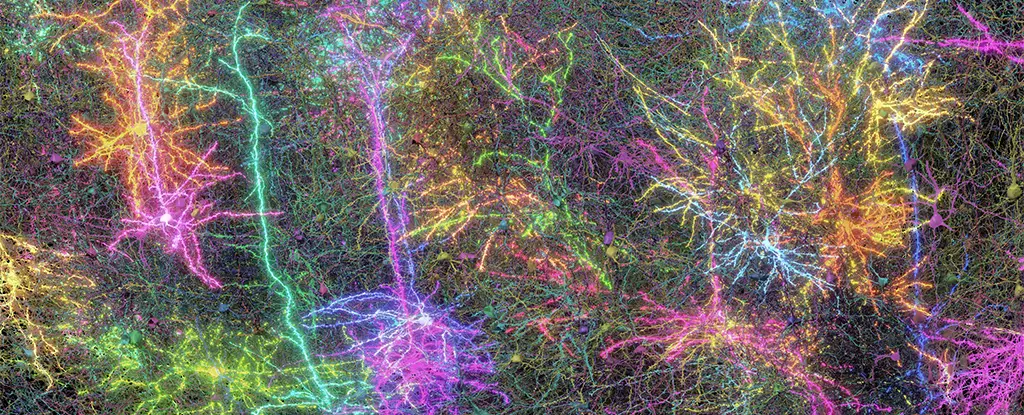Delving into the intricacies of the brain can often feel like standing at the edge of the Grand Canyon—intimidating and overwhelmingly vast. The recent groundbreaking study that meticulously mapped a mere grain-sized section of a mouse brain brings us closer to understanding the extraordinary neurological landscape that resides within our heads. While the metaphor of trying to comprehend the cosmos might resonate with many of us, the revelations drawn from this research illuminate not only the structure but also the function of the intricate neural networks that define our cognitive existence.
This monumental research spans nearly a decade, harnessing the expertise of over 150 researchers across 22 esteemed institutions. Notably, Princeton University, Baylor College of Medicine, and the Allen Institute for Brain Science have collaborated on this ambitious project. What sets this study apart is its dual approach: for the first time, scientists have effectively combined structural and functional analyses, providing a comprehensive view of the brain’s wiring and how it facilitates communication between neurons.
The Connectome: A Glimpse into Our Neural Universe
The study’s findings culminated in an unprecedented understanding of what is now referred to as the “connectome.” This digital map details the relationships between a staggering 84,000 neurons, connected by half a billion synapses and sprawling over 5.4 kilometers of neural pathways. The implications of creating such a detailed connectome are profound; it’s as if researchers have unveiled a digital blueprint to a universe that was once shrouded in mystery.
As neuroscientist Andreas Tolias aptly puts it, the brain does more than just process information; it shapes our perception of reality, our emotions, and our decisions. The application of modern neuroimaging technologies has allowed researchers to visualize this complex neural architecture while simultaneously capturing its dynamic functions in real-time, an achievement that could redefine our approach to understanding brain functionality.
Functional Insights: Watching the Brain at Work
In this exploration of neural dynamics, the study cleverly utilized video stimuli—a tactic so engaging that even segments from “The Matrix” were incorporated into the experiment. This innovative methodology allowed the researchers to monitor brain activity effectively while the mouse was in motion, providing rich data for analysis. The dissection into 28,000 layers made it possible to employ advanced AI algorithms paired with human expertise to decipher the complex webs of neuronal connections, fundamentally changing the way we interpret brain activity.
This project marks a significant leap from previous studies on insect brains, as the complexity of mammalian brains presents unique challenges. The level of sophistication achieved in this research not only raises the bar for future studies but also signals a pivotal moment for neuroscience.
The Path Towards Understanding Brain Disorders
As we stand on the precipice of unraveling the brain’s complex structures, the applications of this research extend far beyond mere mapping. The prospect of utilizing this detailed connectome to explore brain disorders—including Alzheimer’s disease and other forms of dementia—holds transformative potential. Understanding the intricate connectivity patterns that underpin these disorders may lead to insights that could revolutionize the field of neuroscience.
H. Sebastian Seung from Princeton University emphasizes that the technologies fostered by this project may allow for the identification of abnormal connectivity patterns, which could elucidate the mechanisms behind various neurological ailments. This is not merely theoretical; it paves the way for developing targeted therapeutic strategies that could stabilize or even reverse the process of cognitive decline.
The remarkable achievements of this study serve as a clarion call for increased investment and engagement in brain research. The potential ramifications stretch from enhancing our understanding of normal brain function to tackling some of the most pressing health issues of our time. In a society poised at the intersection of mental health crises and technological advancement, prioritizing neuroscience research seems not just prudent but necessary. The brain, often likened to an unexplored galaxy, holds keys to understanding who we are and how we think—both invaluable pursuits in our continuing quest for knowledge and meaning.

